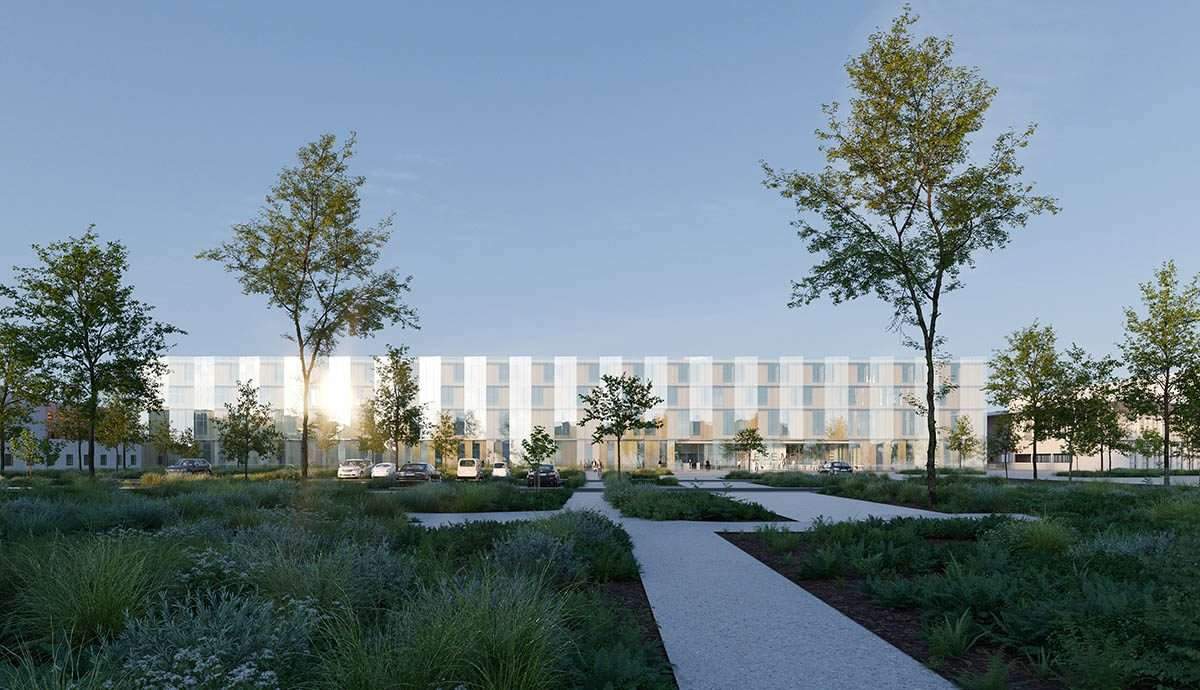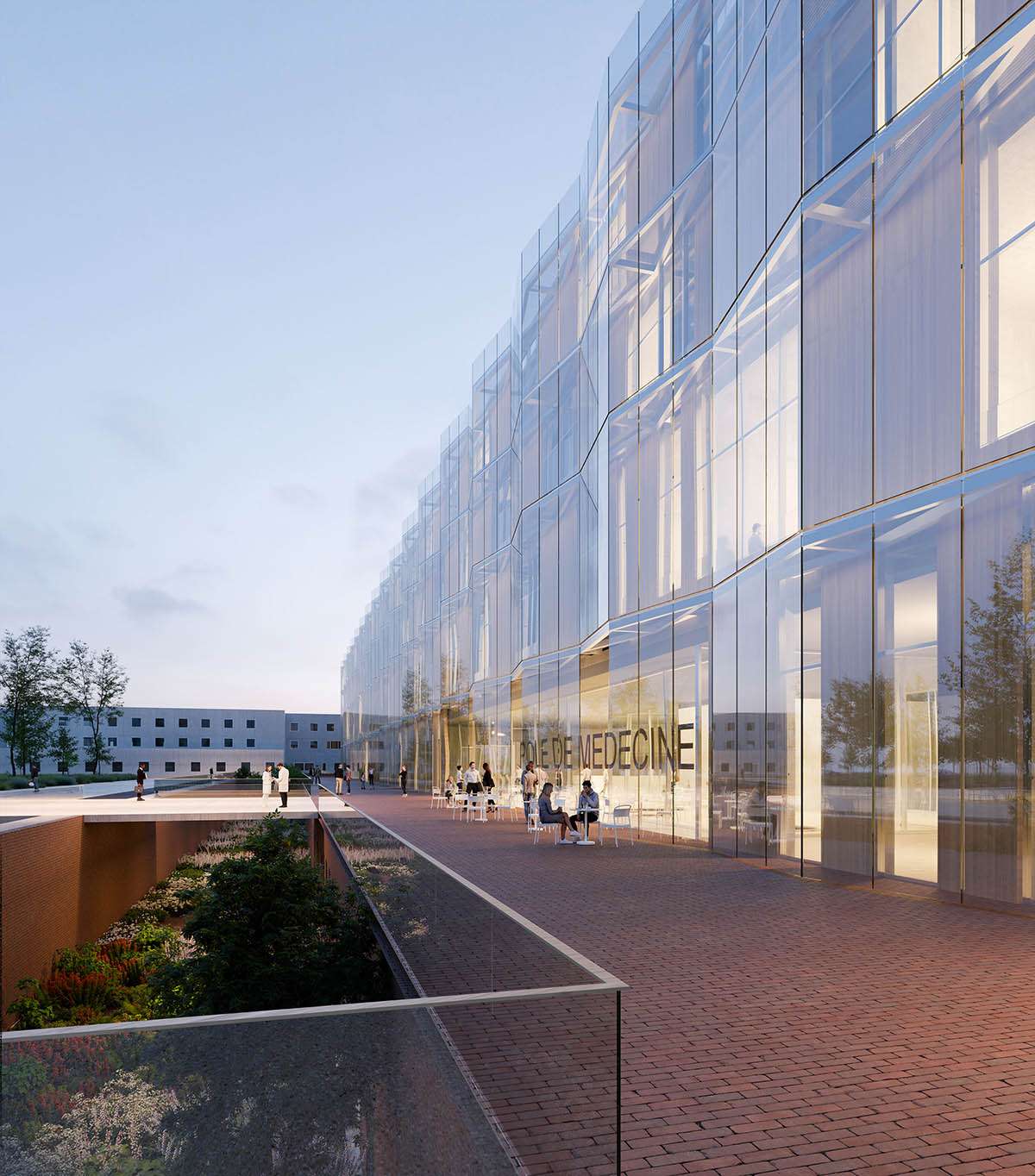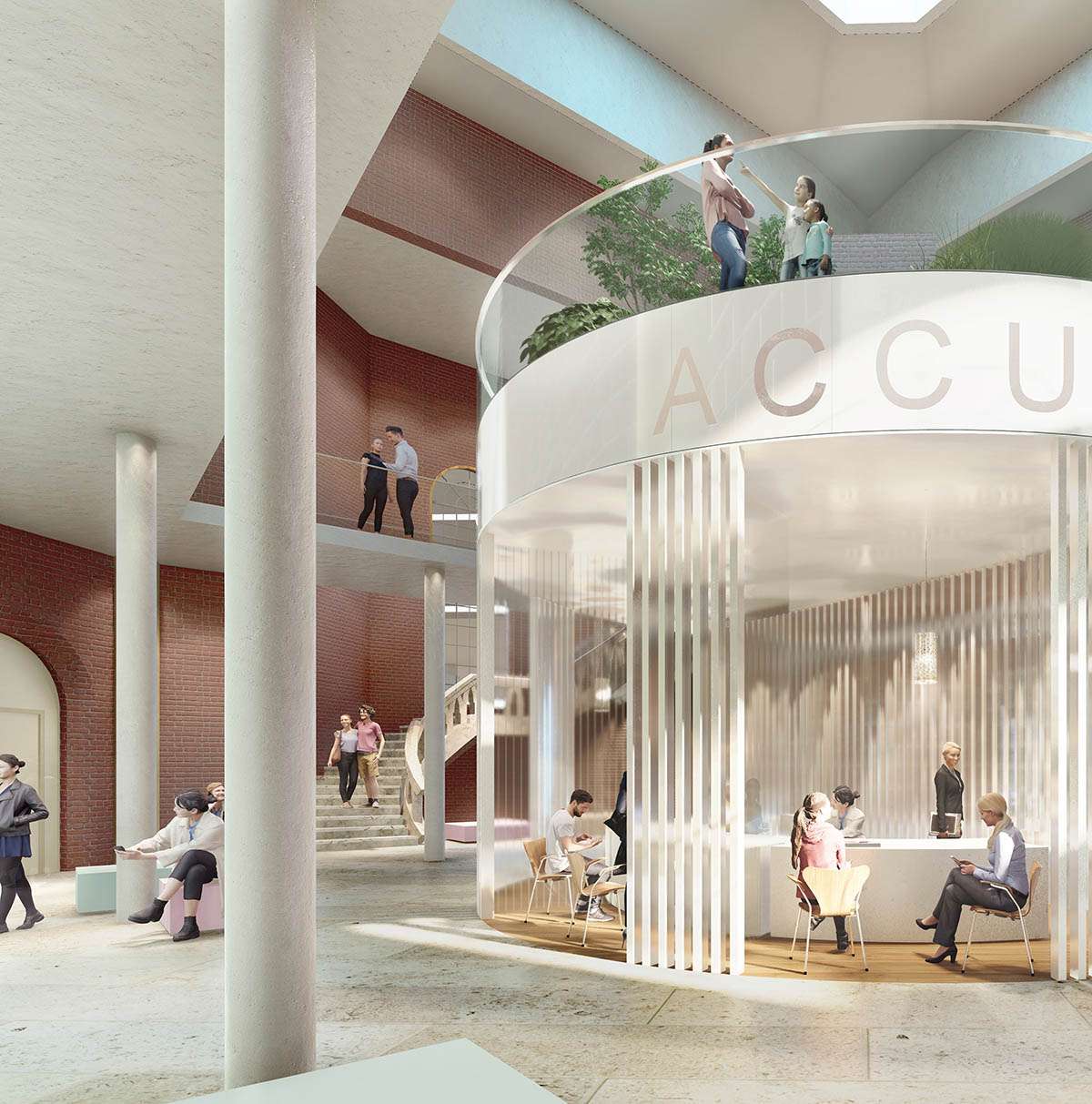Pargade Architectes Patriache and Haïku win competition to design New Reims Hospital France,
Paris-based architectural studio Pargade Architectes,
French agency Patriache and Haïku Consortium have won the design competition for New Reims Hospital in France.
The 52,000-square-meter complex will be mainly devoted to medical activities,
and will include 498 beds, accommodations, a research center and operating rooms.
The new hospital is scheduled to be built in two phases and is expected to be completed in 2028.
Design features
The master plan for the new hospital at CHU de Reims derives from a continuous internal linear link,
which will be a true spine crossing the difference in ground level between north and south.
This internal link will connect all the site centers currently scattered in different buildings,
so the second stage represents the missing piece of the puzzle, which will ensure the reconstruction of the hospital center unit.
To the north, it provides an intersection by continuing the main streams with the preserved old buildings via the Rotunda,
and to the south, in the same way, with the newly built emergency building and first phase.
Thus, the project re-establishes a perfect continuity of service performance and makes it possible to integrate other terminal satellites through a tree structure such as Pole Mother Child, Odontology and Terr Regional Biology Pole.
This internal axis creates a clear separation between the eastern and western facades of the hospital,
while the eastern side corresponds to the interior of the site.
This place is also used for major vehicle flows – such as ambulances and logistics.
The new entrance was placed on the western side,
located on the main façade open to the city and the wider landscape.
It also corresponds from the new southern entrance, to the arrival of patients and visitors,
through a large cultivated square oriented towards the university and the tramway station,
which will open during the third phase of the reconfiguration of the site.
The master plan leads to a complete reversal of the hospital’s direction from north to south.
Building architecture design
The architecture of the complex is designed as both modern and historical,
the façades are made of red bricks reused from demolished buildings.
It straddles the historic axis lined with old buildings from the Maison Blanche entrance,
while the new hospital entrance dominates the site.
The entrance to the new hospital asserts its identity through a striking architectural event in contrast to the rest of the site:
a folded, protective glass screen, mirroring the garden.
The project is composed of large continuous platforms and pierced by large courtyards,
and is characterized by its ability to expand,
which is necessary to combine the different functions of the hospital with multiple connections in the same building.
It is an organized structure between service spaces and dependent spaces that allows diversifying the placement of services and meeting new needs.

Finally, the architects’ approach is part of sustainability by ensuring the robustness of the works:
environmentally friendly, decarbonized, reversible, choosing ambitious building systems
with sustainable materials such as the double-climate façade in the timber structure, and the reuse of existing bricks on the site.
For more architectural news







